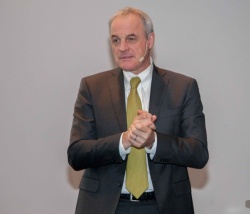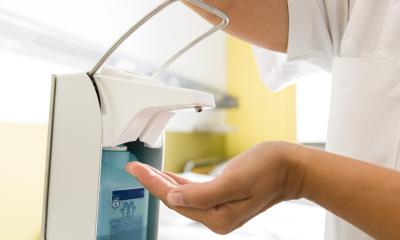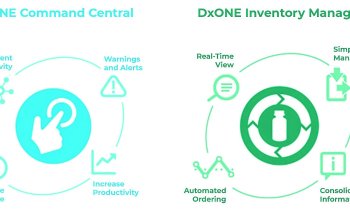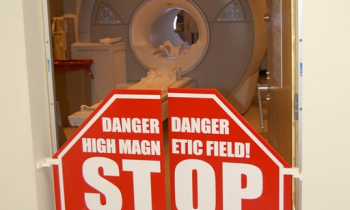Hygiene
Meet Mr Clean Hand
They call him Mr Clean Hand. Professor Didier Pittet MD, Specialist in Infection Prevention and Control at the Hôpitaux Universitaires de Genève and Head of the Clean Care is Safer Care programme of the World Health Organisation (WHO), is known as the ‘Father of Modern Hand Hygiene’.
Report: Michael Krassnitzer


It was Pittet who, in the 1990s, introduced at his hospital the hitherto largest study on the subject of hand hygiene. It was he who defined the ‘five moments for hand hygiene’: before patient contact, before an aseptic procedure, after contact with potentially infectious material, after patient contact and after contact with the immediate patient environment. Additionally, it was he who thought of the ‘steps for effective hand disinfection: rubbing the palms, wrists, back of the hands, the spaces between the fingers, linked fingers, thumbs and fingertips with disinfectant within thirty seconds.
This March, during the First CEE Conference on Hospital Hygiene and Patient Safety (held in Vienna), Pittet spoke about healthcare associated infections (HAI) and the way to combat these with hand hygiene strategies. Such infections cost around 16 million lives worldwide every year. In developed countries these are the second most common cause of death, Pittet believes. ‘However,’ he adds, ‘there’s a simple remedy for hospital acquired infections – and this is hand washing.’ Unfortunately, however, there is one major problem: compliance, which is usually only around 40%.
Between 1994 and 1997 the hand hygiene model that he developed substantially increased willingness amongst Geneva doctors and nurses to carry out regular hand disinfection. The Geneva Model consists of two central cornerstones: an awareness campaign as well as monitoring and compliance confirmation.
The Geneva Model
At the time, funny cartoons of nasty bacteria and dirty hands adorned the corridors of the Geneva hospital, and all nosocomial infections had to be reported. As a study in The Lancet confirms, the success of this model was repeated between 2002 and 2005 in many other countries, including France, Belgium, the USA, Australia, Belgium, Great Britain and Switzerland. A recent adaption of the Geneva Model helped to reduce infant mortality in hospitals in Vietnam by 80%, Pittet reports. In developed countries the risk of healthcare associated infections is twenty times as high.
‘An awareness campaign on its own is not enough. The key to success lies in the adoption of the entire strategy,’ Pittet emphasises. This is what he tried to explain to everyone who, over the years, has asked for permission to use the cartoons displayed at Geneva’s University Hospital. Regular self-assessment is essential to help achieve sustainable changes in behaviour. Hand hygiene is only one aspect of efforts to defeat nosocomial infections. ‘Antibiotics management is just as important,’ emphasises Prof. Herman Goossens MD, head of the Department for Microbiology at Antwerp University Hospital. There is a clear connection. ‘The more antibiotics prescribed, the more resistance occurs.’
Hospitals are particularly prone to resistant pathogens. At the First CEE Conference on Hospital Hygiene and Patient Safety, Goossens reported on a campaign in Belgium that was introduced to reduce the high prescription rates for antibiotics. This included advertisements on posters, in newspapers, on radio and television as well as information brochures and a website. The key point was a metaphor describing antibiotics as swimming armbands, worn daily on buses or in streets, but which deflate as soon as the wearer actually falls in the water. The success: Around €500 million were saved between 1999 and 2010 because the prescription rate for antibiotics was reduced.
PROFILE:
Didier Pittet MD directs the Infection Control Programme and WHO Collaborating Centre on Patient Safety at Geneva’s University Hospital and is the External Lead of the World Health Organisation’s (WHO) Global Patient Safety Challenge Clean Care is Safer Care and African Partnerships for Patient Safety. He developed the Geneva Hand Hygiene Model, and showed in a big study (1995–1997) the effects of this strategy on healthcare associated infections. He also led the development of the WHO Guidelines for Hand Hygiene in Health Care (pub: 2009).
24.04.2015











